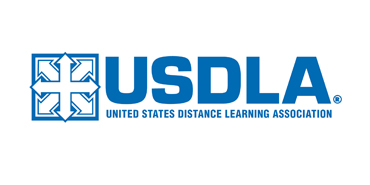New Risk in Proctoring
Ellen Ruark, Marketing Director, Biometric Signature-ID
Biometrics are a movie staple, beginning to border on cliché. Fingerprints, irises, and faces are scanned by futuristic machinery as the hero desperately awaits access to some tightly secured area. There’s one fresh plot twist: the hero’s body biometric data has been stolen. That starts an epic quest to stop the villain from using that info for nefarious purposes…then pinning it on the hero, of course. Ouch.
It’s not far-fetched. Security experts agree that as we move to a biometrically identified society, hackers and crooks will keep up, finding ways to make off with this precious information.
It’s precious because it can’t be replaced. Nobody can issue you a new face or palm print. Your unique biologic data will mean big bucks to thieves because of this, and there’s little you can do about protecting yourself once your body information has left…well, your body.
What you probably don’t know is how biometrics have stealthily crept into distance learning. The disease vector is unexpected. It’s proctoring.
Virtual proctoring today is big business in a very competitive landscape. A kind of biometrics arms race took place a few years ago with proctoring companies scrambling to implement biometric identification technology. Although video observation and lockdown browsers provided schools with some confidence that testing was confined to real students, not ringers, proctoring companies wanted to provide more identity assurance. Once they began integrating biometrics, it became hard to stop, and now their services are riddled with invasive, privacy-busting identification techniques like facial scans, voice prints, fingerprints, even knuckle and palm scans.
Are they effective? With virtual proctors you at least have a chance to catch cheaters; but proctorless technologies that capture movements or certain biometrics that place the burden of proof on the faculty are simply recipes for failure on several fronts. Students’ user experience is often negative with complicated directions for submitting to scans (don’t move, do this, do that), and asking faculty to review video is probably not going to happen.
But what isn’t being talked about is the real and present danger these physical biometrics present to distance learning institutions. These institutions can and will be sued if their students’ data is ever hacked. This increased risk of liability is often missed by risk management teams because of departmental silos: one hand doesn’t always know what the other is doing. No one is asking how proctoring companies secure this data, how long they keep it, where they keep it, and when it will be disposed of (if ever). Proctoring companies aren’t security companies after all.
Current lawsuits against Facebook and Shutterfly over biometrics – specifically facial images – are the canaries in a coal mine. Privacy laws regulating the capture and use of biometrics have laid dormant in many states but with increasing biometric images captured, and the threat of hacking and ransomware, the flood gates are opening for more lawsuits.
Schools not tracking this issue are exposed to needless liability as well as imposing serious risk on their students…all for a test?
Physical biometrics, while valuable as identifiers, are a double-edged sword for us all. They work very well, but using them always means a risk of compromise. If ever hacked you can’t replace biologic information. You can’t grow new body parts. And just try getting your images back from the hackers.
If a fingerprint or facial scan was used to access your device, your bank accounts will be accessible or the app simply to open your garage door. Your privacy and security is now gone. A better, safer choice is gesture biometrics. These are dynamic gestures unique to the individual – like writing, or the way you walk – that can be changed and reset. As effective as physical biometrics, gestures are less intrusive and a great fit for online student identification because they’re low-liability, low-cost, highly accurate and privacy friendly.
If the future of all of us is biometric identification, let us embrace it but not give up our body images too easily. Leaving too much of ourselves behind is never a good idea. Schools would be wise to learn how far physical biometrics have penetrated their systems and think about whether they really want that risk.


